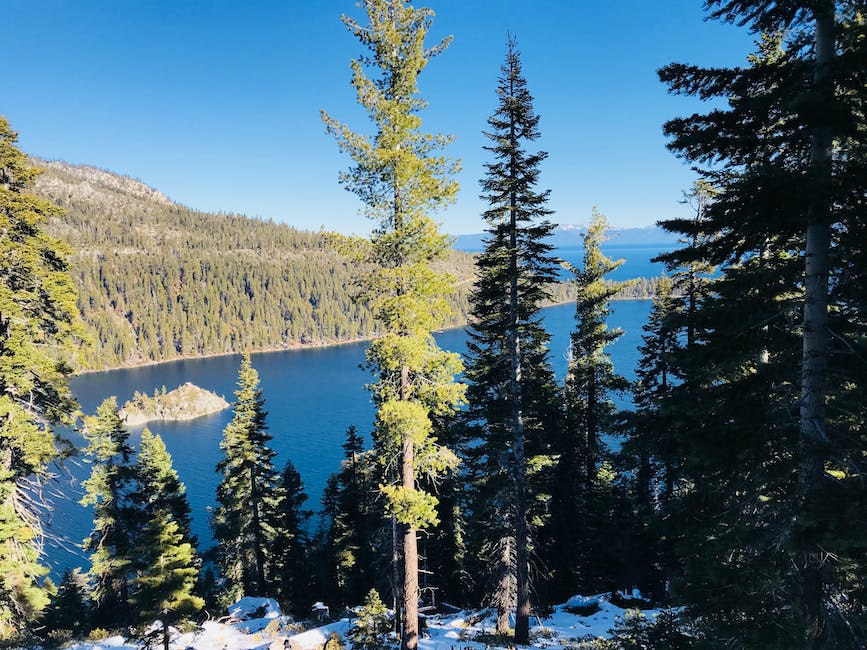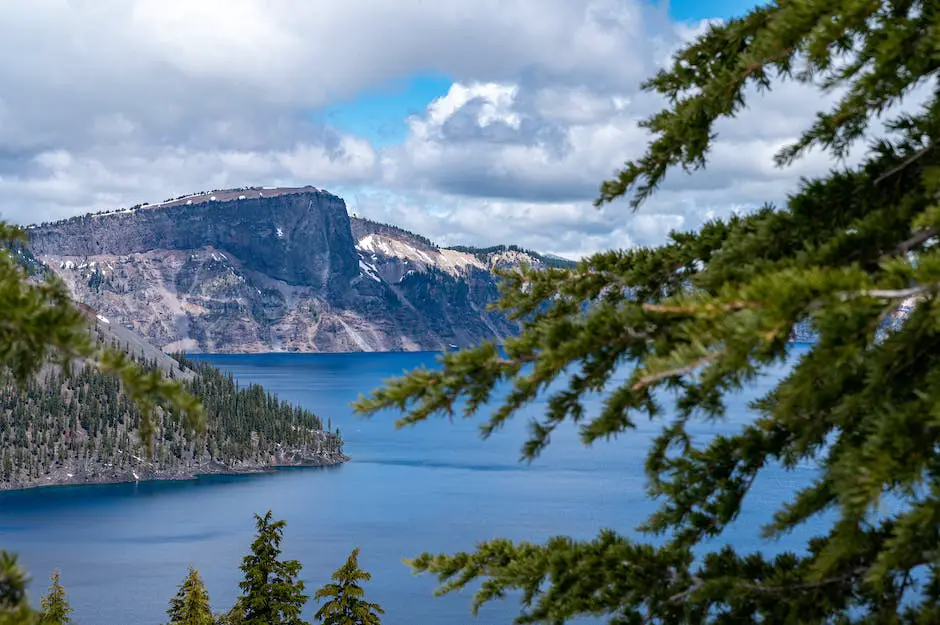Water is an essential part of a pine tree’s life. A pine tree can lose up to 100 gallons of water per day through its leaves. In order to maintain its water balance, a pine tree needs to uptake an equal or greater amount of water.
A pine tree needs approximately 10 gallons of water per day.
How many gallons of water does a pine tree need per day?
This is a general rule of thumb for watering trees during drought conditions. Basically, you should provide 10 gallons of water per week for each 1 inch of trunk diameter. So, for example, a tree with a 12 inch diameter trunk would need 120 gallons of water per week.
New trees usually need 5 gallons of water twice per week for the first three months and 10 gallons once per week for the remainder of the year. Be sure to soak the root ball every time you water.
How many gallons of water does a tree use per day
Trees are an important part of the water cycle, and play a vital role in regulating the amount of water in the environment. They can absorb large amounts of water, which helps to prevent flooding, and also help to recharge groundwater reserves.
Most people know that not watering a tree will kill it if there isn’t enough rainfall. But overwatering can also kill a tree. The water fills the air pockets in the soil, and the roots effectively drown.
Is 5 gallons of water enough for a tree?
The rule of thumb for established trees is 10 gallons of water for each inch of the tree’s diameter. You can use a ruler at knee height to measure or just use your best guess.
If you’re not sure whether your trees need water, ask an arborist.
This is the easiest watering method that I have found. It is very simple and it works well. You just need to drill three 3/16-inch holes in a 5-gallon bucket, fill the bucket with water, and place it near but not right up against the trunk. The bucket will provide a slow, deep soaking in the root zone, which is best for the tree.
How many minutes should you water a tree?
Assuming you would like tips for watering your lawn:
If you want a healthy lawn, water it deeply and less frequently rather than shallow and more often. Two inches of water per week is a good amount to aim for, and watering should take place every day for approximately 15-20 minutes. Of course, if it rains that day, you don’t need to water. It’s best to water in the evening or early morning, when the sun isn’t up, to minimize evaporation.
A fresh tree can use up to 1 quart of water per day for each inch of diameter on the cut end. A typical 7-foot-tall tree may have a 3-inch trunk diameter, so will need up to 3 quarts of water per day. If your tree is taking up a lot of water, this is actually a good sign and indicates the tree is fresh and hydrated.
How many gallons is 1 inch of water per week
This means that, if you have a lawn that is one square yard, you should expect to use around six gallons of water on it each week.
In the evening or early morning turn on the soaker hose And let the water seep in for at least one hour. The ideal time to do this is in the evening so the plants can absorb the water overnight. Don’t forget to turn off the water in the morning so you don’t waste water during the daytime when the plants don’t need it.
How many gallons per hour do trees need?
When determining how many and what size emitters to use for a new shrub or small tree, start with two 1 gph emitters placed 12 inches from the base of the plant. If planting a larger sized tree, you may need to increase the flow rate to 2 or 4 gph. For a 5 foot or larger shrub, you will likely need three 1 gph emitters.
If you see any of these signs, it’s a good idea to check the tree’s roots to see if they are getting too much water. If the roots are soaking wet, the tree is getting too much water. try tofix the problem by draining the area around the tree or by providing the tree with less water.
Do pines need a lot of water
Pine trees are very hardy and can withstand drought conditions better than other trees, but that doesn’t mean they don’t need water. If you live in an area with warm winters and hot, dry summers, it’s important to water your pine trees regularly throughout the year. If you’re not sure how often to water, check with your local nursery or plant expert. Also, make sure to water at the base of the tree, not the entire canopy, to avoid disease.
Passion flower requires consistent moisture year-round, even in winter, though its slightly reduced moisture needs in winter mean a lighter watering schedule. Water thoroughly when the top of the soil feels completely dry.
How long can a pine tree last without water?
If you’re cutting your own Christmas tree, make sure to cut it within 6-8 hours of when you plan to bring it inside. Christmas trees can go a surprisingly long time without water, so you don’t need to worry if it’s been a few hours since you cut the tree. Just be sure to give it a fresh cut and put it in water as soon as you can.
It’s always a good idea to water your newly-planted trees right away. A good rule of thumb is to give them 2 to 3 gallons of water per inch of their trunk diameter. So, if your tree’s trunk is 2 inches in diameter, you should give it 4 to 6 gallons of water.
What is the best way to water a tree
It is important to deeply water your plants during the summer to prevent heat and drought stress. Watering early in the morning will help to reduce water loss due to evaporation and wind drift.
Newly planted trees or shrubs require more frequent watering than established trees and shrubs. They should be watered at planting time and at these intervals:
1-2 weeks after planting, water daily
3-12 weeks after planting, water every 2 to 3 days
How many gallons of water can a tree hold
A large tree can hold a tremendous amount of water after a rain event. It isn’t uncommon for a 100 gallon tree to have 300 gallons or more of water in it’s trunk and root system. This is one of the huge benefits of trees, and one of the reasons why they are such an integral part of the water cycle.
A 5 gallon tree is a pretty small tree. The height is typically only 2-5 feet, which is shorter than most other trees. However, these trees are still common, and you can find them in a variety of sizes. Japanese Maple trees, for example, are often found in this size.
Can you grow a tree in a 5 gallon bucket
It is generally recommended to use 5-gallon buckets when planting vegetables. This is because they provide enough space for the plants to reach their full height without crowding each other. All you need is a good soil mixture for this kind of planting. Just make sure that it is rich in nutrients and doesn’t contain too much clay or sand.
The best time to water plants is in the morning or evening. Morning watering is actually preferable to evening watering as the plant has time to dry before the sun goes down. At night, water tends to rest in the soil, around the roots, and on the foliage, which encourages rot, fungal growth, and insects.
How often should you water trees in 100 degree weather
It’s important to keep your newly planted trees well-watered during a heat wave. They should receive 15 gallons of water at least twice a week. Deep watering every three to four days should keep them healthy and happy.
An 8-foot tree can often “drink” a gallon of water per day. This means that the tree is transpiring, or emitting water vapor, at a rate of one gallon per day. This is a lot of water and it is important for the tree to have a regular supply of fresh water to maintain this rate of transpiration.
Conclusion
A pine tree needs 20 gallons of water per day.
Pine trees need an average of 15 gallons of water each day.

My interest in trees started when I first saw the giant sequoias in Yosemite.
I was a teenager then, and I remember thinking, “I need to learn more about this.”
That moment stuck with me.
A few years later, I went on to study forestry at Michigan Tech.
Since graduating, I’ve worked in a mix of hands-on tree care and community education.
I’ve spent over ten years helping people understand how to plant, maintain, and protect the trees in their neighborhoods.
I don’t see trees as just part of the landscape.
They are living things that make a real difference in our daily lives.